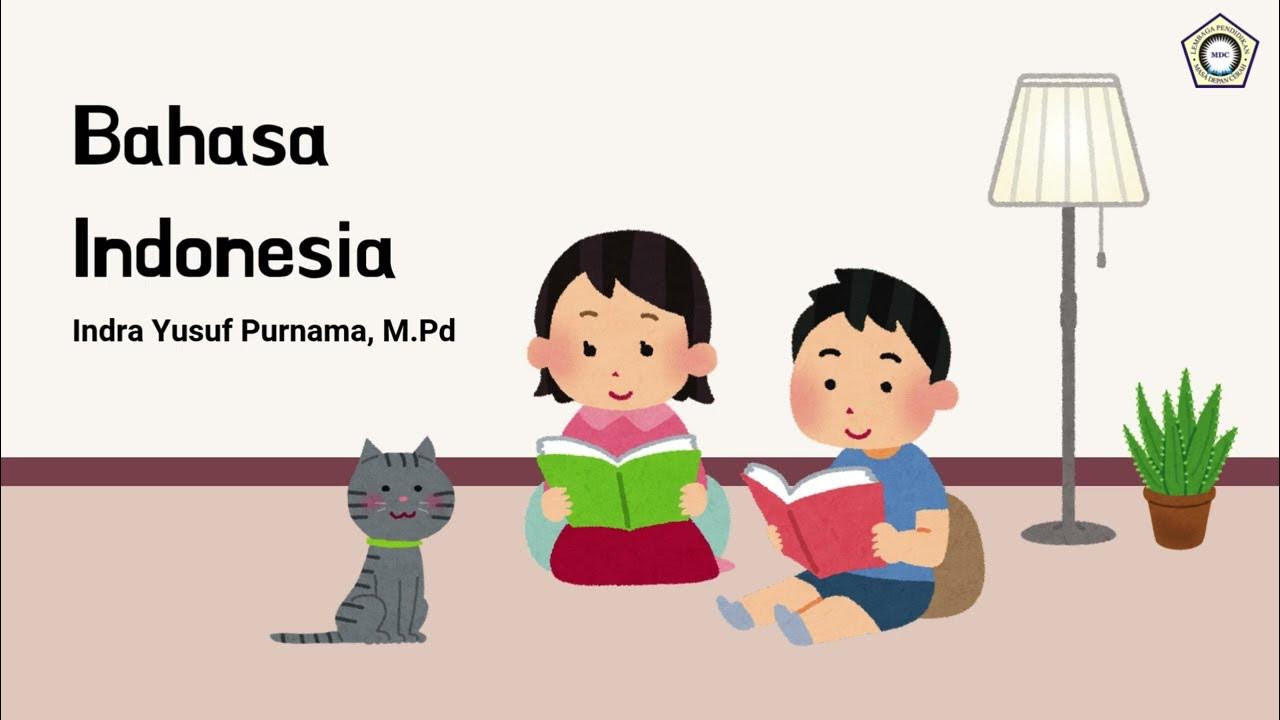Materi Drama dan Contoh Drama Monolog
Summary
TLDRIn this video, the presenter, Indra Hermalita, explores the concept of drama in Indonesian literature. The discussion covers various types of drama, such as tragedy, comedy, and melodrama, and outlines their characteristics with examples. It also dives into the structural elements of a drama, including theme, setting, plot, characters, and perspective. The video explains how conflict plays a crucial role in drama and the importance of conflict resolution in maintaining audience engagement. Furthermore, it touches on different formats of drama performance, from stage plays to radio dramas, offering a comprehensive overview of the topic.
Takeaways
- 😀 The video begins with a greeting from the host, Indra Hermalita, introducing the topic of the lesson which focuses on the Indonesian language and drama.
- 😀 The host briefly discusses the meaning and background of the word 'drama,' derived from Greek 'draomai,' meaning to act or react.
- 😀 Drama is described as a literary work written in dialogue form, intended to be performed by actors and actresses.
- 😀 Various forms of drama are introduced, such as tragedy, comedy, tragicomedy, melodrama, and dagelan, with examples provided for each genre.
- 😀 The script also highlights specific sub-genres, including opera, tablo, and pantomime, showcasing their differences in presentation and performance styles.
- 😀 The video explores how drama can be classified into different types based on the medium, such as stage plays, radio dramas, television dramas, films, and traditional puppet shows like wayang.
- 😀 A distinction is made between traditional and modern drama, emphasizing the use of scripts in modern drama, while traditional forms often operate without written scripts.
- 😀 Key elements of a drama are discussed, including themes, setting, plot, characters, point of view, language style, and messages that the writer aims to convey.
- 😀 The structure of a drama is explained, with stages such as exposition, complication, climax, resolution, and conclusion that guide the progression of the story.
- 😀 Finally, a personal story from a caller named Devika is shared, detailing her experience with COVID-19, highlighting the importance of health protocols, and concluding with a reminder for listeners to take care of their health.
Q & A
What is the primary topic discussed in the video?
-The video discusses the concept of drama, its types, and various aspects of drama including its structure, classification, and key elements.
What is the definition of drama according to the script?
-Drama is defined as a literary work written in dialogue form, intended to be performed by actors on stage. It is a portrayal of human life and society, meant to entertain and convey a message.
What are the main types of drama mentioned in the script?
-The script mentions ten types of drama: Tragedy, Comedy, Tragicomedy, Melodrama, Dagelan, Opera, Tablo, Sogiri, Pantomime, and Monologue.
Can you explain the concept of 'tragicomedy' mentioned in the video?
-Tragicomedy is a genre of drama that combines elements of both tragedy and comedy, blending serious themes with lighter, humorous moments. An example given is 'Opera Kecoa' by N. Riantiarno.
What does the term 'melodrama' refer to in the context of the script?
-Melodrama refers to a type of drama that features sentimental, thrilling, and emotionally intense characters and situations. An example is 'Opera Primadona' by N. Riantiarno.
How does the script describe the importance of conflict in drama?
-Conflict is crucial in drama as it drives the plot and engages the audience. It can be external (between characters) or internal (within a character's mind). Conflict adds depth to the story and leads to the resolution of the drama.
What are the main structural components of a drama outlined in the script?
-The script outlines the following components of drama structure: Exposition, Rising Action, Climax, Falling Action, and Resolution.
What is the role of characters in drama as explained in the script?
-Characters are the central figures in drama. They play crucial roles in advancing the plot and embody the themes of the work. The script mentions different types of characters, including protagonists, antagonists, and supporting figures.
How does the script categorize dramas based on performance medium?
-Dramas are categorized into five types based on the performance medium: Stage Drama, Radio Drama, Television Drama, Film Drama, and Wayang (traditional puppet drama).
What type of drama is 'Wayang' and what makes it unique?
-Wayang is a traditional Indonesian puppet drama where a puppet master (dalang) uses carved wooden or leather puppets to perform and narrate a story. It is unique because it blends performance art with storytelling using puppets.
Outlines

This section is available to paid users only. Please upgrade to access this part.
Upgrade NowMindmap

This section is available to paid users only. Please upgrade to access this part.
Upgrade NowKeywords

This section is available to paid users only. Please upgrade to access this part.
Upgrade NowHighlights

This section is available to paid users only. Please upgrade to access this part.
Upgrade NowTranscripts

This section is available to paid users only. Please upgrade to access this part.
Upgrade NowBrowse More Related Video

Teks Drama Kelas 11 SMA ~ Bahasa Indonesia

DRAMA BALI MODERN dan TRADISDIONAL - Bagian Materi Kesusastraan Bali

Understanding Form, Genre, and Meaning in Literature | Types of Literature

PANGAJARAN BASA SUNDA KELAS 9: DRAMA

PPT MATERI DRAMA BAHASA INDONESIA Kelas 11 | Gratis Download PPT #materidramakelas11 #pptdrama

Bahasa Indonesia PB Akhir - Pengenalan Teks
5.0 / 5 (0 votes)